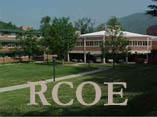Artifact #1
Literature Circle Unit Plan: This is a method for teaching Language Arts and Reading where the teacher places students in small groups (according to reading level or ability) and each "circle" is assigned a novel or several small books to read as well as various roles and activities.
Context
I planned and created this Literature Circle
Unit during my Reading and Language Arts Methods course at Appalachian
State University in the Fall of 2001 with a group of three other classmates.
After reading and planning lessons, I typed the instructions and examples
using a word processor and created web pages for each lesson with Netscape
Composer. Working in collaboration my group, we created Launch and
Closing activities as well as Modifications for the unit.
Impact
I plan on using Literature Circle Units in
my classroom because they promote healthy social interactions between students
and meet the diverse learning styles of my students. I can use this
unit to discuss not only Literature but elements of the Social Studies
and Information Skills Curriculum.
Allignment
This unit was designed for a fifth grade class,
based on Pioneers of the United States West. In a fifth grade class,
I can expect to have various reading levels. By using an "on grade
level" circle, an "one grade below" circle, a "two grades below" circle,
and an "one grade above" circle, I can place students in the the most developmentally
appropriate group. The work for each circle has been modifided, such
as the number of pages or books that a circle may be assigned to read.
This approach helps learners of all kinds to work in an environment conducive
to learning. (INTASC Princilple 3)
Literature Circles have a wide variety of
"jobs" and activities that focus on developing higher level thinking skills.
For example, I have designed this lesson so that many different "jobs"
are used, that include creating questions, selecting passages, identifying
key vocabulary, and using charts to organize information. The students,
in a way, have to become an expert on a particular job and have to present
information about that job to the other group members by sometimes locating
outside sources such as the Internet (Technology Standard II A).
This Literature Circle is designed so that the students are the main ones
responsible for the "teaching" and I can be the facilitate the learning.
This is a wonderful example of a student-centered activity. (INTASC
Princliple 4)
Before I would use individual Literature Circles,
I would model it using one book for the whole class so that I can explain
the jobs, the procedures, and my expectations. The circles encourage
social interactions between students, but students also serve as a motivators
for each other, keeping them on task. Time is set aside for independent
and group work. I would give students a time frame in which the books
are to be read, the jobs completed and discussed, and a product is to be
constructed that demonstrates what they have learned. The jobs that
I have chosen for this circle give students choices in the kinds of information
they choose to present to the rest of the circle. These jobs allow
students to be both "teachers" and "learners" by gathering the information
then sharing it with others. (INTASC Principle 5)
I have planned this unit to include both short-term
(small sections) and long-term goals (the final product). I provided
for differences in learning abilities by the establishment of four ability-based
groups that can be modified as needed. The Literature Circle Unit
meets many curriculum competencies in several subject areas. (INTASC
Principle 7)
By placing this unit on the Internet, other
educators will be able to use technology to access this unit that accomidates
for the diverse learning styles of their students (Technology Standard
III B)
